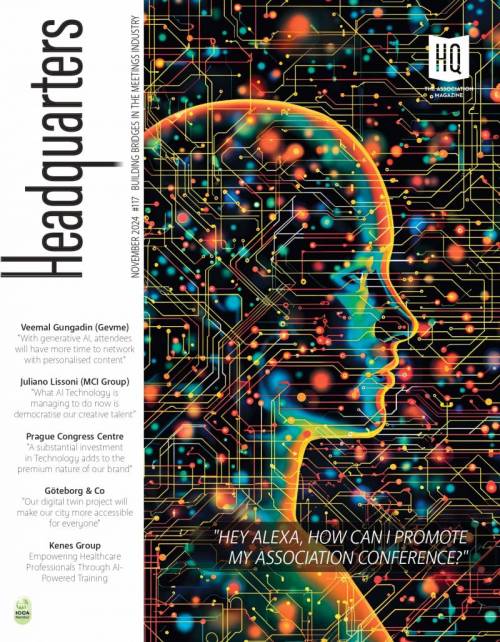DEI Isn’t a Passing Fad – It’s a Change of Organisational Culture

Ever since the acronym DEI (Diversity, Equity and Inclusion) has become part the global vernacular, it has been a source of controversy and misunderstanding. Some people see it as an economic movement, trying to even out a world of haves and have-nots. Others see it as a racial movement, trying to balance a world of white privilege against a history of discrimination against people of color. Still others see it as simply putting a more identifiable title on an ongoing movement to empower a more representative portion of a changing global population.
The worldwide association community is not immune from these situations. In fact, associations are right in the middle of DEI discussions and implementations, and we need to be aware of the impact we can have on this important issue.
Associations reflect the industry, profession, community, or cause that they represent
They are collective spokespersons for their membership and stakeholders. As such, they can either be leaders or followers of trends in their industry or profession. Many business associations are perceived to be more conservative in nature, and therefore likely to be slower in adopting DEI initiatives. However, when you think about it, these associations also have the opportunity (power?) to change minds within their organisation’s leadership/membership and in the businesses those people represent when it comes to the value of adopting DEI strategies in their workplaces.
In other associations, including many professional societies, the profession and its members may be perceived as representing a more progressive view of the world. These associations have traditionally been more open to accepting changes in the workplace and in their respective societies. Diversity, equity, and inclusion seem to be natural goals for their organisations, so DEI efforts are not a threat to them. These groups should still be careful to have a well-planned approach to DEI implementation. Change never comes easy in any association, so remember that the focus of these efforts needs to be on the outcomes, not just the process.
Here is the great opportunity being handed to the association community: Instead of being a forum for misunderstanding DEI, associations can be a showcase for the value of adding DEI efforts to a well-designed management plan. Associations get two chances to see the impact of DEI: they can see it in their own internal culture (i.e., the staff of the association) and in their external culture (their volunteer leadership).
Your Value Proposition is the Key to Building Sponsor Relationships
Associations shouldn’t assume that the DEI movement is another temporary fad that has achieved its peak acceptance and will soon fade away
Even if the DEI terminology fades into disuse, the awareness it has raised regarding the need for organisations and businesses to be more reflective of their membership and stakeholders has become permanent. In fact, the time when there is no need to identify an organisation’s efforts by the DEI letters may be the best signal yet that the organisation has reached the point where those efforts are simply part of its day-to-day operations.
For most associations, however, we are probably still a long way from that point.
No Member Left Behind
Associations need to continue being a catalyst for change
As has been mentioned in this column many times over the past several years, associations are uniquely positioned to be leaders in a number of areas in addition to their stated mission or purpose. There is no requirement for them to do so, of course. Some associations have (at least in the past) felt that getting involved in social issues is not within their purview, since they are scientific organisations, or hospitality associations, etc. Others feel that they don’t have the resources to expand their programme of work outside of their basic purpose.
The biggest concern of many associations is that their members and stakeholders cross numerous political, social, and cultural lines, and they don’t want to alienate any of their supporters by reaching into issues not related to their mission. There will always be some danger of this occurring, but the association’s leaders must determine the cost- benefit of acting on DEI and similar issues.
We live in an ever-changing world, one that has become so much smaller thanks to technology and mass communications. No organisation can exist in a vacuum, safe from the pressure to address major issues affecting their constituencies. DEI and its underlying messages present a chance for associations to help bridge many gaps and provide a level of leadership desperately needed in today’s world.
If not us, then who? If not now, then when?
Cybersecurity is Also a Big Issue for Associations
.jpg) About the Author
About the Author
Mark Levin, CAE, CSP has more than 20 years of experience as an association executive and is also an internationally-known speaker and consultant to the non-profit and association community. He currently serves as Executive Vice President of the Chain Link Fence Manufacturers Institute, an international trade association, and as President of B.A.I., Inc., his speaking and consulting firm.
Other Articles
About Us
Supported by the Union of International Associations (UIA), the International Association of Professional Congress Organisers (IAPCO) and the Interel Group, the global public affairs and association management consultancy, Headquarters Magazines serve the needs of international associations organising worldwide congresses.
















